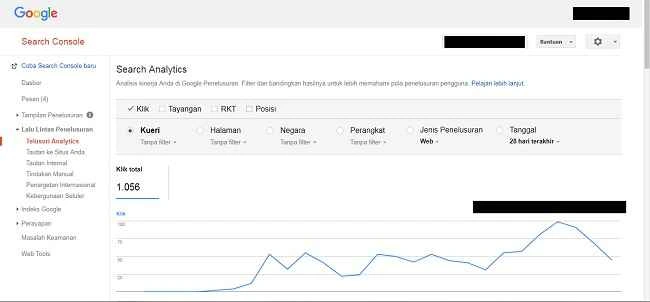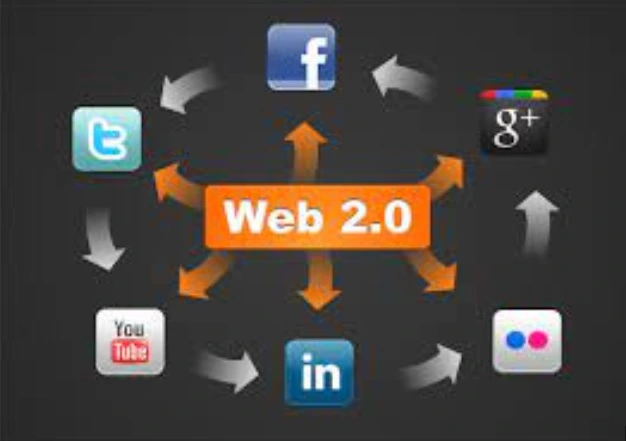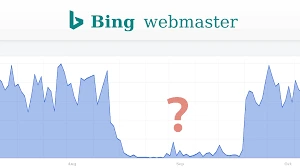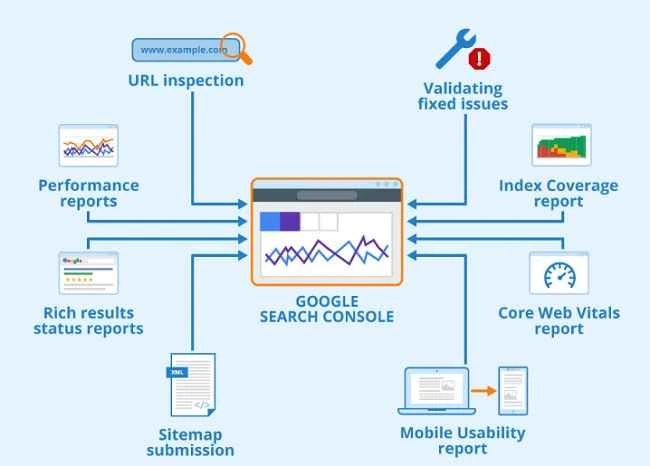In this article, we’ll explore the essential steps to index your backlinks manually using Google Search Console. As search engines evolve, understanding and implementing effective strategies for backlink indexing become paramount for maintaining a competitive edge. Let’s delve into the straightforward yet powerful techniques that can elevate your website’s presence on the digital landscape. Whether you’re a seasoned SEO professional or a website owner looking to enhance visibility, this guide will equip you with practical insights to navigate the intricacies of manual backlink indexing. Let’s embark on a journey to unlock the potential of your online presence.
Manual Backlink Indexing Process
In the realm of digital marketing, where the visibility of your website can make or break its success, manual backlink indexing emerges as a crucial technique. This section will walk you through a step-by-step guide on how to index backlinks manually via Google Search Console, providing you with actionable insights to enhance your website’s performance.
The Benefits of Manual Backlink Indexing:
Before we dive into the process, let’s understand why manual backlink indexing holds significance. Unlike relying solely on search engine algorithms, manual indexing empowers you to take control of how quickly your backlinks get recognized. This section will highlight the advantages of this hands-on approach, including faster recognition, targeted troubleshooting, and improved monitoring.
A Step-By-Step Guide to Index Backlinks Manually Via Google Search Console:

Step 1: Setting Up Google Search Console:
Begin by establishing a connection with Google Search Console, a powerful tool that enables webmasters to monitor and optimize their site’s presence in Google Search results. This step will guide you through the process of setting up your account and website within the console.
Step 2: Identifying Your Backlinks:
Effective indexing starts with knowing your backlinks. This step will delve into methods for identifying and categorizing your backlinks, ensuring a comprehensive understanding of the landscape you’re working with.
Step 3: Submitting URLs for Indexing:
The core of manual indexing involves submitting specific URLs for Google to crawl and index. This step will provide insights into the best practices for submitting URLs, ensuring a seamless integration into the search engine’s index.
Step 4: Troubleshooting Common Issues:
No process is without its challenges. This step addresses common issues that may arise during manual indexing and offers practical solutions to troubleshoot and overcome obstacles.
Step 5: Monitoring Backlink Indexing Performance:
Once you’ve initiated the manual indexing process, it’s crucial to monitor its performance. This step will guide you on how to track the progress, allowing you to make informed adjustments for optimal results.
The Benefits of Manual Backlink Indexing:
Summing up the manual backlink indexing process, this section reinforces the advantages of this hands-on approach. From increased control over indexing speed to targeted issue resolution, embracing manual indexing can elevate your website’s visibility and impact.
In the next sections, we’ll explore proven techniques, tools, and strategies to complement your manual efforts, ensuring a comprehensive approach to backlink indexing. Let’s continue our journey towards mastering the art of manual backlink indexing for an enhanced online presence.
Techniques for Manual Backlink Indexing:
As we navigate the landscape of manual backlink indexing, understanding and implementing proven techniques become pivotal. This section will delve into actionable strategies, both within and beyond Google Search Console, to optimize the indexing process and enhance your website’s visibility.
Proven Techniques to Index Backlinks and Webpages:
In this segment, we’ll explore a set of proven techniques designed to amplify the effectiveness of manual backlink indexing. Each technique is backed by practical insights and can be seamlessly integrated into your overall SEO strategy.
Use Google Search Console:
Harness the power of Google Search Console to its fullest. This technique will elaborate on the different features and functionalities within the console that directly contribute to efficient backlink indexing.
Generate a Sitemap and Submit It:
Creating and submitting a sitemap is a fundamental yet often overlooked aspect of manual indexing. This technique will guide you through the process, emphasizing the importance of an up-to-date sitemap.
Internal Links Should Not Use Nofollow Tags:
Internal linking is a valuable SEO strategy. This technique stresses the significance of avoiding nofollow tags on internal links to ensure they contribute to the overall indexing process.
Remove Misplaced Noindex Tags:
Errors in tagging can impede the indexing process. This technique focuses on identifying and rectifying misplaced noindex tags, ensuring that your content is accessible to search engines.
Delete any Rogue Canonical Tags:
Canonical tags guide search engines on preferred versions of content. However, rogue or misconfigured canonical tags can lead to indexing challenges. This technique will assist you in identifying and rectifying such issues.
Take Crawl Blocks off Your Robots.txt File
Your robots.txt file plays a crucial role in guiding search engine crawlers. This technique advises on removing unnecessary crawl blocks, allowing for smoother indexing.
Post Your Content on Social Media:
Leverage the power of social media to expedite the indexing process. This technique explores the impact of social media sharing on backlink visibility.
Create Effective Internal Links:
Strategically placed internal links contribute to a seamless user experience and facilitate indexing. This technique offers insights into creating internal links that enhance both user navigation and search engine crawls.
Block or Redirect Low-Quality Pages:
Not all pages on your website may contribute positively to indexing. This technique advises on blocking or redirecting low-quality pages to streamline the indexing process.
Get High-Quality Backlinks:
Quality over quantity is key in the world of backlinks. This technique emphasizes the importance of securing high-quality backlinks to enhance the overall authority and indexability of your website.
Be Persistent:
Indexing is not always an instantaneous process. This technique encourages persistence and consistency in your manual indexing efforts for long-term success.
Make Sure the Page is Worthwhile and Different:
Content uniqueness and value are paramount for successful indexing. This technique delves into creating worthwhile and distinct content that search engines are eager to index.
Integrate Your Site with IndexNow:
Explore cutting-edge technologies to expedite indexing. This technique introduces IndexNow, a protocol designed to notify search engines about content changes promptly.
Ping the URLs:
An old but effective technique involves pinging URLs to notify search engines of updates. This technique provides insights into the art of URL pinging for quicker recognition.
Using Web 2.0:

Leverage Web 2.0 platforms for increased visibility. This technique explores the role of Web 2.0 in the manual indexing process.
Implementing these proven techniques can significantly enhance the effectiveness of your manual backlink indexing efforts. In the subsequent sections, we will further explore tools, strategies, and additional insights to ensure a comprehensive approach to achieving optimal backlink visibility. Let’s continue our journey towards mastering the art of manual backlink indexing.
Tools and Platforms for Backlink Indexing:
In the dynamic landscape of SEO, having the right tools at your disposal can make a substantial difference in the efficiency and effectiveness of your backlink indexing efforts. This section will introduce you to some of the top tools and platforms designed to streamline the manual backlink indexing process.
Top Tools for Website Indexing:
Google Index Tool:
Google offers a set of tools within Google Search Console specifically geared towards webmasters. The Google Index tool allows you to explore how Googlebot views your pages, assess your site’s index status, and submit URLs for indexing. This section will provide an in-depth walkthrough of using this tool effectively.
Bing Webmaster Tools:

While Google is the dominant search engine, Bing Webmaster Tools should not be overlooked. This tool provides insights into how Bing crawls and indexes your site. The section will highlight the key features and functionalities within Bing Webmaster Tools that can contribute to a comprehensive indexing strategy.
Screaming Frog SEO Spider:
A versatile tool for SEO professionals, Screaming Frog SEO Spider crawls websites and provides valuable data for analysis. This section will guide you on how to utilize this tool for backlink indexing, emphasizing its features that aid in identifying and rectifying indexing issues.
Ahrefs Site Audit Tool:
Ahrefs is renowned for its comprehensive SEO tools, and the Site Audit tool is particularly valuable for indexing purposes. This section will explore how to leverage Ahrefs to conduct a site audit, identify backlink-related issues, and optimize for efficient indexing.
These tools are not only invaluable for manual backlink indexing but also contribute to a holistic SEO strategy. Understanding their functionalities and incorporating them into your workflow can enhance the visibility and performance of your website.
In the following sections, we will delve into the final strategies to expedite backlink indexing, explore methods for searching backlinks on Google, and address frequently asked questions related to backlink indexing. Let’s continue our journey towards mastering the intricacies of manual backlink indexing for a robust online presence.
Strategies for Faster Backlink Indexing:
Beyond the manual efforts and tools discussed earlier, employing strategic approaches can further expedite the backlink indexing process. In this section, we’ll explore a set of comprehensive strategies designed to ensure faster recognition of your backlinks, ultimately enhancing your website’s visibility.
Top Strategies to Index Backlinks Faster:
Building High-Quality Backlinks
The foundation of efficient indexing lies in the quality of your backlinks. This strategy will delve into the importance of acquiring high-quality backlinks and how they contribute to faster recognition by search engines.
Manual URL Submission:
While Google Search Console allows for manual URL submission, this strategy will provide additional insights into the best practices for submitting URLs to various search engines, ensuring prompt indexing.
Pinging Linking Page URLs:
An age-old technique, URL pinging involves notifying search engines of updates. This strategy will guide you on how to effectively ping linking page URLs to expedite the indexing process.
Utilizing Social Media Platforms:
Social media shares can have a significant impact on the speed of indexing. This strategy explores how strategic sharing on social media platforms can enhance the visibility of your backlinks.
Using RSS Feeds:
RSS feeds provide a structured way to share content updates. This strategy will explain how to utilize RSS feeds for notifying search engines about new or updated content, facilitating faster indexing.
Monitoring and Troubleshooting Your Backlinks:
Continuous monitoring is key to addressing any potential issues that may hinder indexing. This strategy emphasizes the importance of vigilant monitoring and provides tips for efficient troubleshooting.
Submitting to Web Directories:
Web directories remain a valuable resource for backlink visibility. This strategy will guide you on how to strategically submit your website to relevant web directories for accelerated indexing.
Guest Blogging on Influential Websites:
Collaborating with influential websites through guest blogging not only enhances your backlink profile but also contributes to faster indexing. This strategy explores the symbiotic relationship between guest blogging and indexing.
Utilizing XML Sitemaps:
While previously mentioned, this strategy will provide additional insights into optimizing XML sitemaps for effective communication with search engines and ensuring swift indexing.
Building Internal Links:
Internal linking not only aids user navigation but also influences indexing speed. This strategy will guide you on strategically incorporating internal links to enhance the overall indexability of your website.
Creating Fresh and Valuable Content:
Content relevance and freshness play a crucial role in indexing. This strategy emphasizes the significance of consistently producing high-quality, valuable content to attract search engine attention.
Using Backlink Indexing Services:
Explore specialized services designed to streamline the backlink indexing process. This strategy provides an overview of backlink indexing services and how they can complement your manual efforts.
Collaborating with Influencers and Bloggers:
Influencers and bloggers can amplify the reach of your content, leading to faster indexing. This strategy explores the benefits of collaborations and how to strategically engage with influencers and bloggers.
Implementing these strategies collectively can create a robust approach to backlink indexing, ensuring that your website’s content is promptly recognized and indexed by search engines. In the subsequent sections, we will explore methods for searching backlinks on Google, address frequently asked questions, and provide a conclusive overview. Let’s continue our journey towards mastering the art of manual backlink indexing for an optimized online presence.
Top of Form
How to Search Backlinks on Google?
Understanding how to effectively search for backlinks on Google is a crucial skill for any website owner or SEO professional. This section will explore various methods and tools that empower you to identify and analyze backlinks pointing to your website, gaining valuable insights into your online presence.
Using Google Search Operators:
“link:” Operator: G
Google’s “link:” operator is a straightforward way to discover pages that link to a specific URL. This subsection will guide you on how to use this operator effectively and interpret the results.
“site:” Operator:
The “site:” operator allows you to narrow down your search to a specific domain. This strategy is particularly useful for gaining an overview of all the backlinks associated with your website. Learn how to utilize this operator for comprehensive results.
“Related:” Operator:
Discover related websites that may link to your content using the “related:” operator. This subsection will explain how to leverage this operator to identify potential backlink sources and assess your website’s niche connections.
Google Search Console:
Backlink Reports:
Google Search Console provides dedicated reports on your website’s backlinks. This subsection will guide you through accessing and interpreting these reports, offering insights into the domains linking to your site and the authority they carry.
Performance Report:
Utilize the Performance report to understand how your pages are performing in search results and identify the queries that lead users to your site. This subsection will illustrate how this data can indirectly indicate the effectiveness of your backlink strategy.
Third-Party Tools:
Ahrefs:
Ahrefs is a powerful SEO tool that offers comprehensive backlink analysis. This subsection will demonstrate how to use Ahrefs to not only identify backlinks but also gain insights into their quality and relevance.
Moz Link Explorer:
Moz’s Link Explorer provides valuable metrics to evaluate the authority of your backlinks. This subsection will introduce you to Moz’s features for backlink analysis, helping you assess the impact of your link-building efforts.
SEMrush Backlink Analytics:
SEMrush is another versatile tool for SEO professionals. This subsection will showcase how SEMrush’s Backlink Analytics feature can assist in identifying, analyzing, and managing your backlink profile.
Summing Up Backlink Search Strategies:
In this concluding part of the section, we’ll summarize the various methods and tools discussed, providing a holistic view of how to effectively search for backlinks on Google. Understanding your backlink profile is not only crucial for SEO but also forms the basis for strategic decision-making to enhance your website’s visibility.
In the upcoming sections, we’ll address frequently asked questions about backlink indexing, provide a final word on mastering this process, and offer an invitation to stay updated through our newsletter. Let’s continue our exploration of mastering the intricacies of manual backlink indexing for an optimized and well-recognized online presence.
Frequently Asked Questions (FAQs) About Indexing Backlinks:
Addressing common queries surrounding backlink indexing is essential for providing clarity and guidance to readers. This section will answer key questions that often arise, offering insights into the nuances of backlink indexing.
What is backlink indexing?
Backlink indexing refers to the process by which search engines, like Google, recognize and include a link to your website in their database. It is a crucial aspect of SEO as indexed backlinks contribute to a website’s visibility in search engine results.
Why is it essential to index backlinks?
Indexing is essential because it determines whether search engines acknowledge and display your backlinks in search results. Only indexed backlinks contribute to your website’s overall SEO and visibility.
How do search engines like Google discover and index backlinks?
Search engines discover backlinks through crawling the web. They follow links from one page to another, indexing the content and links along the way. Manual submissions through tools like Google Search Console also contribute to the indexing process.
How long does it typically take for backlinks to get indexed by search engines?
The time it takes for backlinks to get indexed varies. Some may be indexed quickly, while others may take weeks. Factors such as the authority of the linking site, the frequency of crawling, and the relevance of content play a role in indexing speed.
Are all backlinks guaranteed to get indexed?
No, not all backlinks are guaranteed to get indexed. Search engines prioritize high-quality, relevant, and authoritative links. Backlinks from low-quality sources or irrelevant content may not be indexed.
Can I manually submit backlinks for indexing?
Yes, you can manually submit backlinks for indexing using tools like Google Search Console. This allows you to ensure that specific URLs are recognized and included in the search engine’s index.
Are there any tools or services that can help with backlink indexing?
Several tools and services are designed to assist with backlink indexing, including Google Search Console, Ahrefs, Moz, and SEMrush. These tools provide insights into your backlink profile and help you optimize for better indexing.
What role does content relevance play in backlink indexing?
Content relevance is crucial for backlink indexing. Search engines prioritize links from contextually relevant and high-quality content. Backlinks from relevant content are more likely to be indexed and positively impact SEO.
Can social media sharing influence backlink indexing?
Yes, social media sharing can influence backlink indexing. When content with backlinks is shared on social media platforms, it increases the likelihood of search engines discovering and indexing those backlinks.
How often should I check the indexing status of my backlinks?
Regular monitoring of the indexing status is recommended, especially after implementing new backlink strategies. Checking every few weeks or after significant updates ensures you stay informed about the performance of your backlinks.
Does the quality of a backlink affect its chances of getting indexed?
Yes, the quality of a backlink significantly affects its chances of getting indexed. High-quality, authoritative backlinks are more likely to be recognized and included in search engine indexes.
Are there differences in indexing backlinks on different search engines?
While the basic principles of backlink indexing apply across search engines, nuances exist. Each search engine has its algorithms and crawling patterns, leading to slight variations in the indexing process.
Conclusion:
In conclusion, mastering the art of manual backlink indexing is integral to optimizing your website’s visibility in search engine results. Through the step-by-step guide, proven techniques, and strategic approaches discussed in this article, you’ve gained insights into how to effectively index your backlinks, ensuring that your content is promptly recognized by search engines.
Key Takeaways:
Strategic Manual Indexing: The manual backlink indexing process, when executed strategically, allows you to take control of how quickly search engines recognize and include your backlinks in their indexes.
Proven Techniques: The proven techniques explored, from using Google Search Console to employing various tools and platforms, empower you to optimize the efficiency of your manual indexing efforts.
Strategies for Speed: The strategies outlined for faster backlink indexing, including building high-quality backlinks, utilizing social media, and monitoring your backlinks, collectively contribute to a comprehensive approach.
Search Insights: Understanding how to effectively search for backlinks on Google, whether through search operators or specialized tools, provides valuable insights into your website’s link profile.
Frequently Asked Questions: Addressing common queries about backlink indexing ensures that you have a clear understanding of the nuances involved in this critical aspect of SEO.
Stay Informed:
The ever-evolving landscape of SEO requires continuous learning and adaptation. To stay informed about the latest updates, strategies, and tools in the world of backlink indexing and SEO, consider subscribing to our newsletter. Stay ahead of the curve and maintain a competitive edge in the digital sphere.
Your Journey Continues:
As you continue your journey in optimizing your website’s online presence, remember that manual backlink indexing is just one aspect of a comprehensive SEO strategy. Regularly assess and refine your approach, keeping an eye on industry trends and algorithm updates.
Thank you for joining us on this exploration of manual backlink indexing. We hope this guide has equipped you with practical insights and actionable strategies to enhance your website’s visibility and impact on the digital landscape. If you have further questions or seek ongoing guidance, our newsletter is here to provide you with valuable updates. Wishing you success in your SEO endeavors!

